
20 Desert Plants That Can Withstand Scorching Heat & Extreme Drought
Published: 27/03/2023 | Updated: 09/09/2023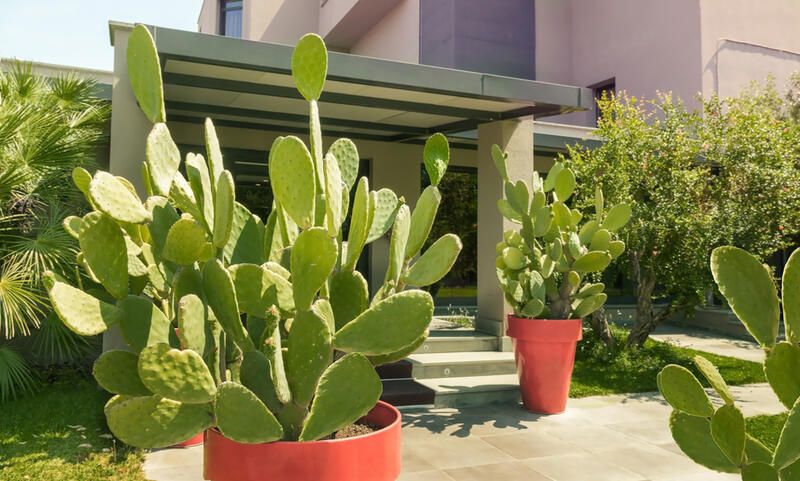
The desert is a harsh, unforgiving place. The heat can be unbearable for many plant species.


However, some plants have adapted to the harsh conditions of that arid climate and can withstand intense temperatures or drought.
These resilient desert plants make great additions to your yard or garden if you live in an area that has desert landscapes, or an extremely hot summer season!
1. Desert Marigold
Desert marigold is a perennial plant that grows in the Sonoran desert. It has yellow flowers and belongs to the Asteraceae family.
It is a native species of this area and a member of the sunflower family, which means it can tolerate extreme temperatures and drought conditions.
The desert marigold is one of many plants that can survive harsh desert climates by storing water in their leaves or stems when it rains, then using this stored water when there's not enough rainfall for their survival needs.
2. Desert Sage
Desert sage is a perennial shrub that grows in desert areas.
The leaves and stems can be used to make tea, which has been used to treat colds, coughs, and sore throats. It's also used to treat stomach aches and diarrhea.
The leaves contain a substance called camphor that helps reduce inflammation of the digestive tract lining (mucosa), relieving pain caused by indigestion, gas, and bloating.
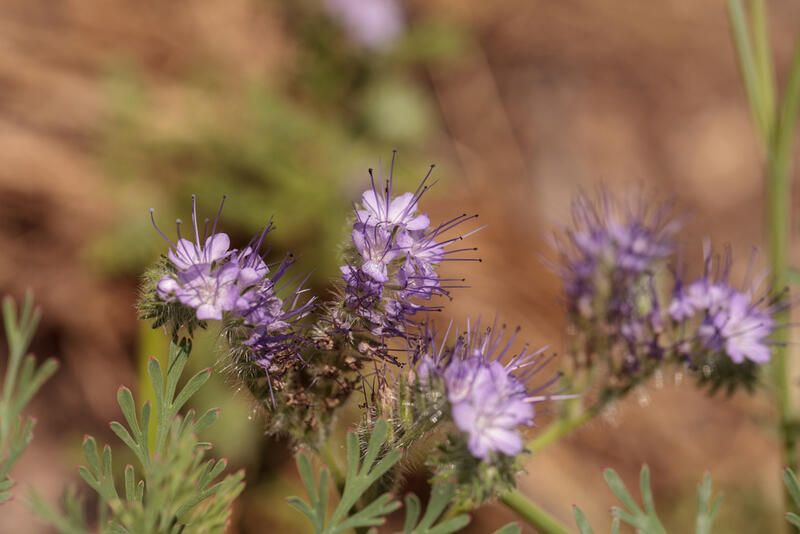
3. Acorn Woodland
This species of desert tree or woodland native to the Sonoran Desert is a perennial shrub that grows in arid regions.
The acorn woodlands can be found in parts of southern California and northern Mexico, including Baja California and Sonora.
This plant can grow up to 6 feet tall when mature, but it has a low-lying growth habit with leaves growing from ground level up through its branches.
4. Western Coral Bean Tree
The Western Coral Bean Tree is a popular ornamental plant that can be found growing in desert gardens in the Sonoran Desert.
This tree has beautiful red and yellow flowers, which make it an attractive addition to any desert garden anywhere.
The Western Coral Bean Tree is also called the Mexican Coral Tree because of its bright yellow flowers and the unique color scheme of its flowers and fruit.
The tree's name comes from these colorful features as well as its resemblance to coral reefs found along coastal areas.
The trees have short lifespans, but they grow quickly during their early years, eventually reaching heights between 25 feet (7 meters) and 35 feet (10 meters).
5. Ajo Cholla Cactus Varieties
The ajo cholla is a species of cactus native to the Sonoran Desert. It's also known as pitaya or dragon fruit.
The saguaro cactus is the largest in the U.S., with its height ranging from 12-60 feet and a trunk diameter of up to 2 feet in diameter.
The saguaro has two arms that grow straight out of its body like branches on a tree, making it easy to recognize which way it's going if you see one while hiking through Arizona or California!
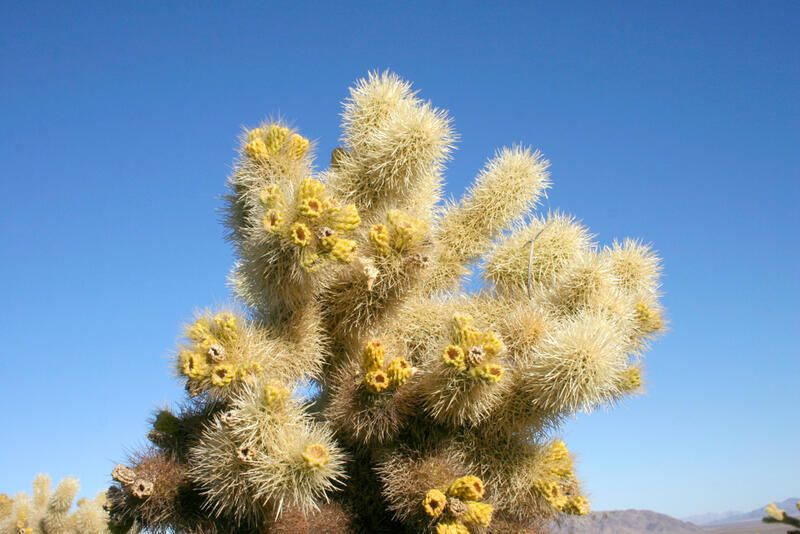
6. Barrel Cactus
The Barrel cactus, also known as H. arborescens, is the most widespread of all cacti in the Sonoran Desert. Its range extends from southern California to Texas and northeastern Mexico.
It grows up to 4 feet tall with a 2-foot diameter trunk that can weigh over 200 pounds! The leaves are flat and spineless, which makes this plant easy to care for indoors or out.
Barrels bloom in late spring (April through June) with small white flowers that grow on top of the stems near where they emerge from the ground.
These flowers produce edible fruit that tastes similar to grapefruit when ripe.
However, be aware that there have been instances where people have gotten sick after eating barrel fruit because their plants were infested with insects like mealybugs or scale insects; make sure yours aren't infected before harvesting any fruit yourself!
7. Mojave Yucca Plant
The Mojave Yucca is a perennial desert plant that can grow up to 20 feet tall. It's native to the Mojave Desert, a desert landscape that spans California and Nevada.
The flowers bloom in late spring and early summer, with white-to-pale pink flowers appearing on single stalks at the top of each stem.
The leaves are narrow and spear-shaped with sharp tips, growing up to 3 feet long by 1 inch wide at their widest point.
8. Desert Willow Tree or Baer's Willow
Baer's willow is a deciduous shrub that grows up to 15 feet tall in the Mojave Desert. It has a narrow crown and a trunk that can grow up to 3 feet in diameter, with gray bark on older branches.
Baer's willow needs full sun and well-drained soil but is drought and heat tolerant as other plant life and can survive in cold and hot temperatures (down to -10 F).
This desert plant has small leaves that turn yellowish-green in winter before falling off during springtime; its flowers are pinkish-white when they bloom in the early summer months.
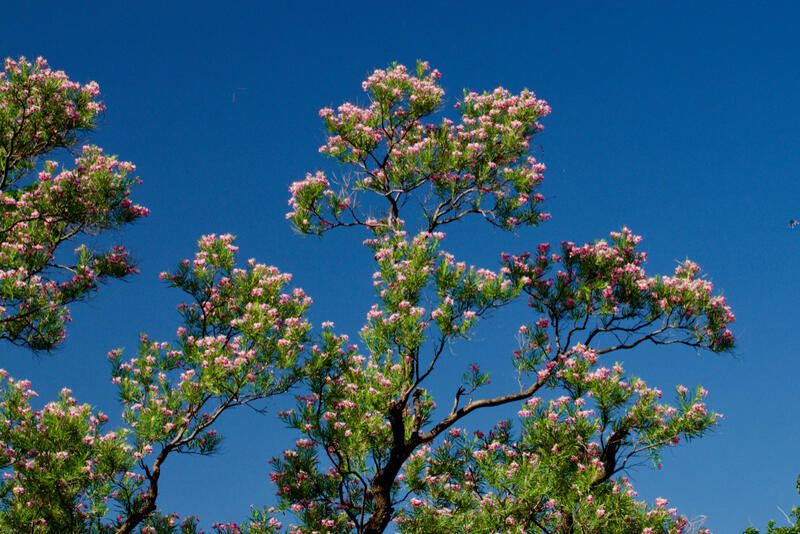
9. Golden Barrel Cactus
The golden barrel cactus is one of the most drought-tolerant plants that live out in the desert. It can grow in full sun, partial shade, or full shade.
It produces yellow flowers in spring and grows up to 3 feet tall. This plant can live for up to 50 years!
10. Organ Pipe Cactus Varieties
The Organ Pipe Cactus is a cactus species native to the Sonoran Desert in North America.
Blue Organ Pipe Cactus is a subspecies that can be found growing in Southern Arizona and Northern Mexico. Pink Organ Pipe Cactus is another subspecies that grows along the Southwestern United States, from California eastward into Texas.
Booth's Giant Organ Pipe Cactus, also known as "Giant Barrel Cactus", is a species native plant found primarily in southern Arizona, but also extends into New Mexico & Sonora state in Mexico.
It's interesting to note that this particular variety has been used as an ingredient in traditional medicine practices by Native Americans since ancient times!
11. Saguaro Cactus
The saguaro cactus is the largest in the world, growing up to 60 feet tall. These iconic desert plants are native to the Sonoran Desert, which stretches from Arizona and New Mexico down through Mexico into Baja California.
Saguaros live for more than 200 years! They're also incredibly resilient: they can withstand scorching heat as well as extreme drought conditions.
Some scientists believe that these amazing desert plants may be able to sense when there's going to be a drought coming up and prepare themselves accordingly (or maybe they just know how much water they'll need).
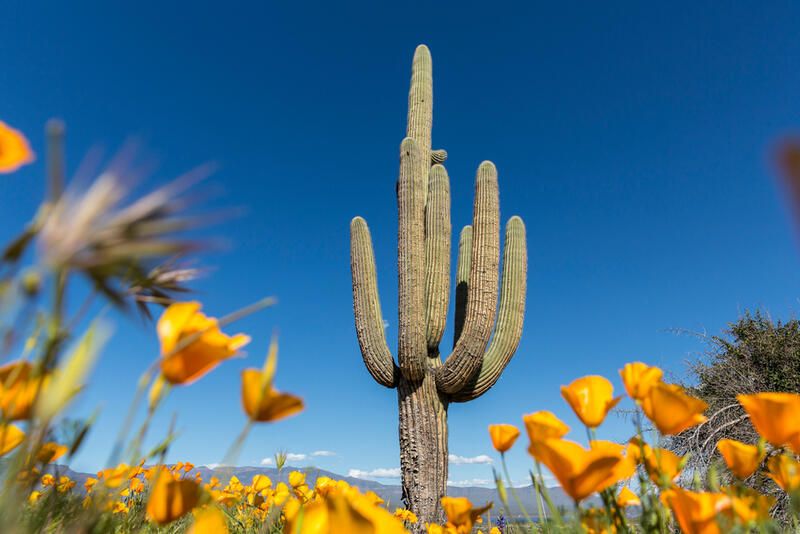
12. Joshua Trees
Joshua tree is another large, iconic plant found in the Sonoran Desert. It's a type of yucca that grows up to 15 feet tall and has thick, fleshy leaves that can reach up to 3 feet long.
They're also protected by sharp spines along their stems and branches, which are usually white or cream-colored but sometimes have hints of green or purple.
They're often used for landscaping and can be the most common desert plants in many homes across the Southwest.
13. Ghost plant
The ghost plant is a succulent and desert plant that can withstand scorching heat and extreme drought. It's native to southern California, where it thrives in the Mojave Desert.
This perennial plant grows up to 6 inches tall and has blue-green leaves.
Ghost plants can be used as ground cover or as ornamental plants in your garden, but they're most often grown indoors as houseplants because they don't like cold weather (they'll die if temperatures drop below 50 degrees Fahrenheit).
14. Creosote bush
Creosote bush is a desert shrub that grows in most desert regions. This plant has yellow flowers and can be found in many parts of North America, Mexico, and even parts of South America.
The creosote bush is a good source of food for wildlife such as rabbits and lizards because they eat its leaves and berries.
It also provides shade for animals that live in hot climates like scorpions or snakes so they can hide from predators who want to eat them!
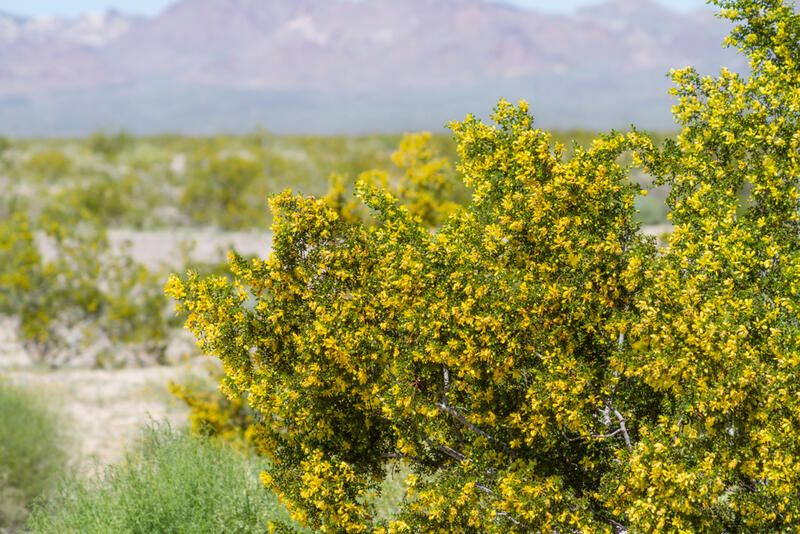
15. Coral Vine
The coral vine is a succulent plant that can grow up to 30 feet high and has pink flowers with red berries.
It's also known as the pink trumpet vine, which is fitting because of its long, trumpet-shaped flowers.
Coral vines are native to deserts and other arid regions around the world, including North America and Australia, so they're well-adapted to surviving in hot conditions.
The plant's leaves are fleshy and thick, protecting them from both heat and drought by storing water inside them.
16. Jade Plant
The jade plant (Crassula ovata) is a succulent that can grow up to 3 feet tall and wide, with thick stems and glossy green leaves. It is native to tropical and subtropical regions of Africa, Asia, Australia, and South America.
Jade plants are drought-tolerant plants that require little water once they're established in your garden. They also thrive in poor soil conditions, making them ideal for growing in containers on patios or porch steps where space is limited by concrete surfaces.
17. Arizona Poppy
Arizona poppy is a perennial herb that grows in the deserts of the southwestern United States. It is a member of the poppy family (Papaveraceae).
The best time of day to water cactus is in the morning because it will reduce evaporation from desert soil and allow the plant to draw up more water.
The best time of day to water cactus is in the morning because it will reduce evaporation and allow the plant to draw up more water. Cacti are xerophytes, which means that they can survive in extremely hot sundry conditions.
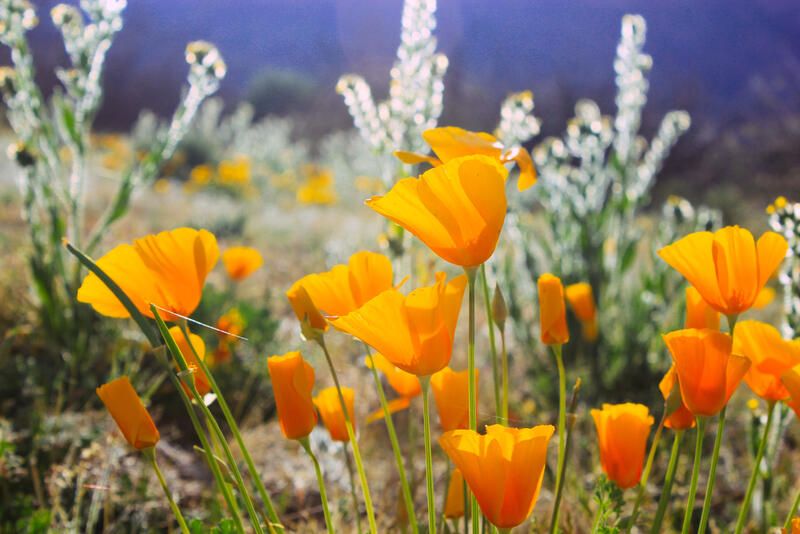
18. Barrel Cactus
Probably the most well-known of the many desert plants here, the barrel cactus is a member of the cactus family. It's native to the southwestern United States and Mexico, as well as Central America.
These plants have been known by many names over the years--including "barrel plant" or "barrel bush"--but nobody knows exactly how they got their name.
Barrel cacti can grow up to 10 feet tall! They thrive in arid regions like those found in deserts, where water isn't readily available for the plants to survive on them (or any other living thing).
19. Palo Verde Trees
Palo Verde trees are native to the Sonoran Desert, and they can grow up to 100 feet tall with large, green leaves. These desert trees can live for up to 200 years and produce beautiful yellow flowers in the springtime.
Palo Verdes are popular as shade trees because they provide a large amount of shade without crowding out other plants that need sunlight.
They're also useful when you need something tall enough to use as a privacy screen.
20. Pancake Prickly Pear Cactus
The Pancake Prickly Pear Cactus is native to the Mojave Desert and is one of the more common species of Opuntia cactus.
It grows up to 6 inches tall and has yellow flowers with red centers that bloom in spring or summer. This plant can be easily identified by its flat, circular leaves that resemble pancakes--hence its name!
The Pancake Prickly Pear Cactus makes a great addition to any garden because it requires little care or water once established.
If you live in an area where summers are hot and dry but winters are cool and moist, this may be just what you need for your landscape design!
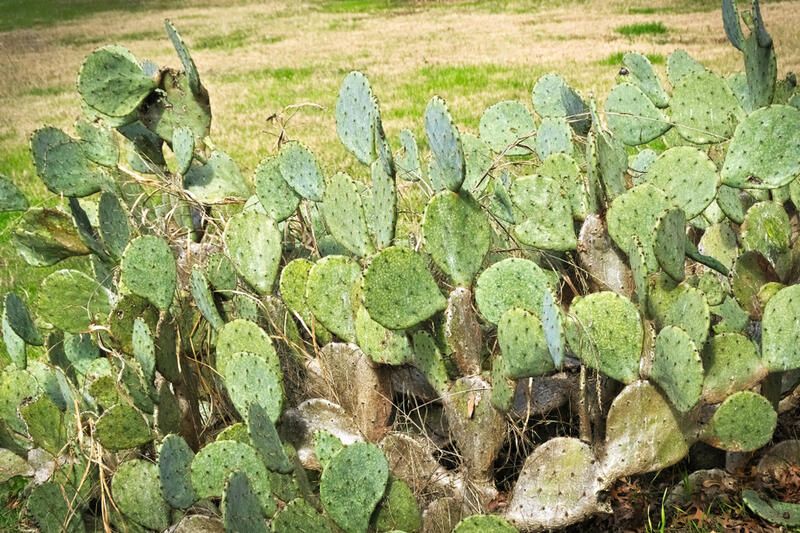
Create a Beautiful Garden With These Beautiful Desert Plants!
So, if you're looking for a hardy plant that can withstand the heat, these desert plants are perfect for you.
They're all very, extremely hardy plants, so they will survive even in harsh conditions and poor soil. Plus, they tend not to need much water at all!
Other desert plants include desert lily, desert palm trees, Arizona poppy flowers, desert mariposa lily, claret cup cactus, and Mexican lime cactus.
Finally, don't forget to visit shrubhub.com for 70% discounts on all landscaping services!


